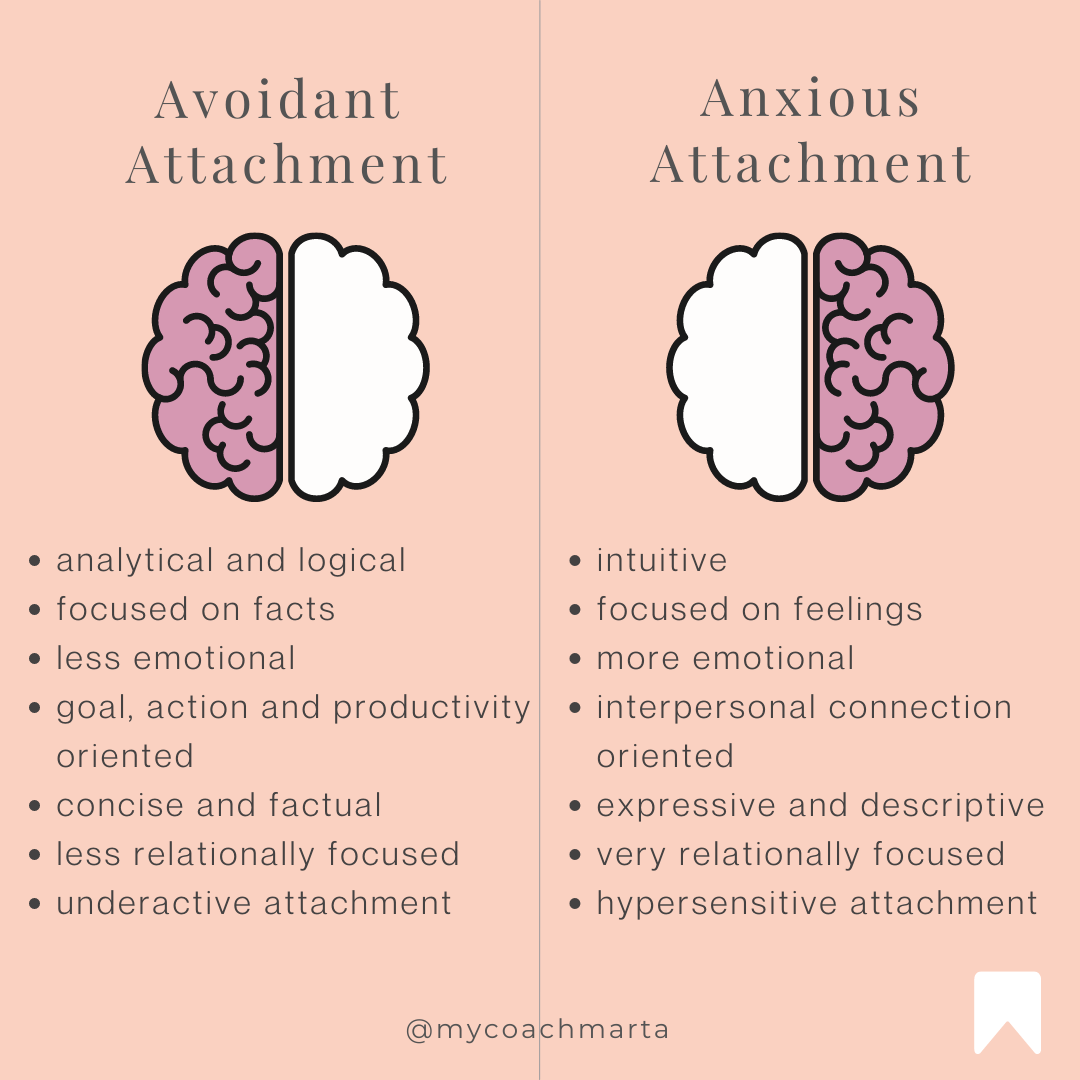Why do opposite attachment styles clash?
As our attachment styles form early, there are also some differences in how our brains develop.
While both types of adaptations come with precious gifts, they are also why we sometimes feel as if we are speaking different languages.
People with a left-brain orientation are more analytical, logical, and factual; and may appear to lack emotional depth. Their rational focus and disconnection from interpersonal nuances sometimes lead them to misinterpret relational cues and motives.
The right side of the brain is more emotional and focused on attachment and relationships. This might emerge as hypersensitivity and reactivity to the emotional nuances of others, whether genuine or imagined, as well as increased anxiety about disconnection or misattunement.
Because of how their brain processes experiences, left-brained avoidants have memories rich in specific, impersonal data without a sense of how things felt emotionally. They may find it impossible to recall any childhood memories.
Right-brained anxious attachers, on the other hand, are better at remembering emotional nuances and vividly recalling how they felt about something. On the flip side, they are also more inclined to dwell on and relive past hurts and hold on to grudges.
The left-brained avoidant's communication tends to be brief and factual, making it difficult for an anxious-leaning partner to fully understand their experience. On the other hand, the right-brained anxious partner's floods of words, complexities and intense emotions colouring their communication overwhelm the avoidant.
Being conscious of these differences in our wiring helps us balance things out through our adult relationships in ways that were not possible in childhood.

